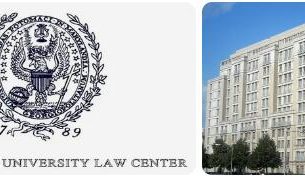Cortés consolidated the occupation by extending the conquest to the southern territories: Guatemala, Honduras, Costa Rica. He also rebuilt the capital, which he gave the name of Ciudad de México. Mexico was called New Spain by the Spaniards. Endowed in 1527 with two Audiencias, one in Mexico City and the other in Guadalajara, in 1535 it was elevated to the rank of kingdom (one of the kingdoms that then made up the Spanish crown). The emperor arranged for it to be governed by a viceroy. Antonio de Mendoza, first viceroy, and his successor Luis de Velasco laid the foundations of the colonial organization, applying the laws issued by the metropolis. In particular, the institution of the encomienda was consolidated, a cell originating from Latin American Creole landlordism. And the Indian population, despite the legislative prohibitions, was subjected to a regime of slavery. Men of culture and ecclesiastics vigorously protested against such abuses, igniting juridical and theological disputes; but despotism prevailed, especially after the accession to the throne of Philip II. 1st century XVII and XVIII saw the growth of the power of landowners, including the Catholic Church. With regard to the Church, it should be remembered the rigor with which the rules of the Inquisition were observed: for example, in May 1649 a gigantic auto de fe took place in Mexico City., which ended with the killing of 108 “heretics” in the town hall square.
According to usaers, the religious orders took on the task of colonizing large areas; the Jesuits proved to be very active in this field. At the beginning of the century. XIX Mexico had a little more than six million residents: forty thousand Spaniards, one million Creoles, one and a half million mestizos, three and a half million pure Indians. The “four plagues” mentioned by Monsignor Abad y Queipo, bishop of Michoacán weighed on them: economic disorder, oppression of the Indians, administrative abuses, corruption. But Mexico was rich: the same prelate claimed that the gold from its mines and the proceeds from its agricultural exports provided the Spanish state with one sixth of the national income. It is necessary to go back to that reality to understand how in Mexico, unlike the other Latin American countries, the revolutionary process of independence did not initially have the Creoles as protagonists, but the mestizos and, to a small extent, the Indians. The agitation, started in 1808, it developed two years later. On 16 September 1810 a priest, Fr Miguel Hidalgo y Costilla, parish priest of the village of Dolores, urged the population to rise up in arms against the gachupines (a derogatory term used by the Mexicans to indicate the Spaniards) with the cry of “Long live our Lady of Guadalupe! Down with bad governance! ”. Given the signal of the insurrection, Hidalgo, at the head of thousands of mestizos and Indians, set out to conquer the country.
Obtained some victories by taking the royalist army by surprise, when he reached the threshold of the capital he did not know how to profit from the momentum: defeated on 11 January 1811 in the vicinity of Guadalajara (battle of the Calderón bridge), he was then captured and shot. His banner was first collected by Ignacio Rayón, then by another priest, José María Morelos y Pavón. Trained by experience, Morelos organized a more disciplined army than Hidalgo’s; moreover he elaborated a political program which included, in addition to independence, the abolition of caste differences, the division of large landholdings, the revocation of taxes paid during the colonial era. Finally, he decided to give a constitutional order to the revolution: therefore, after having occupied an area of ”free Mexico” between Veracruz and Acapulco, on 14 September 1813 he settled in Chilpancingo the first Constituent Congress, which on the following 6 November proclaimed national independence. The armed struggle, however, turned for the worse. On 22 October 1814 the Congress approved in Apatzingán the text of the first republican constitution, which essentially provided for the establishment of the presidential regime, the legislative power entrusted to two chambers, universal suffrage, the catholicity of the state, the abolition of all forms of slavery, the equality of all Mexicans before the law. But the Spaniards managed to capture Morelos and on December 22, 1815 the heroic priest was shot dead. For five years the efforts of the separatists were blocked, despite the guerrilla warfare conducted in the south by groups under the command of Vicente Guerrero, Félix Fernández (nicknamed Guadalupe Victoria), Nicolás Bravo, Francisco Javier Mina (the latter, taken prisoner, was shot in Sombrero). The turning point came in 1820, as a consequence of the liberal pronouncement of Rafael Riego who in Spain forced Ferdinand VII to restore the 1812 Constitution of Cadiz. It was a turning point in every sense: not only because the “revolution” got underway again, but also because its architects changed. In fact, the Creoles replaced the mestizos and the Indians. They understood that Latin America was destined to dissociate itself from Spain: therefore, it was better to direct things rather than risk being directed by them. On the basis of this consideration, the wealthy Creole class thought to come to terms with one of the leaders of the guerrilla, Vicente Guerrero, to agree on the modalities of independence. The interlocutor in the negotiations was General Agustín Itúrbide, an officer of the royal army who had distinguished himself in the war against Hidalgo and Morelos. The agreement was reached. On February 24, 1821 Itúrbide proclaimed the so-called Plan de Iguala.



